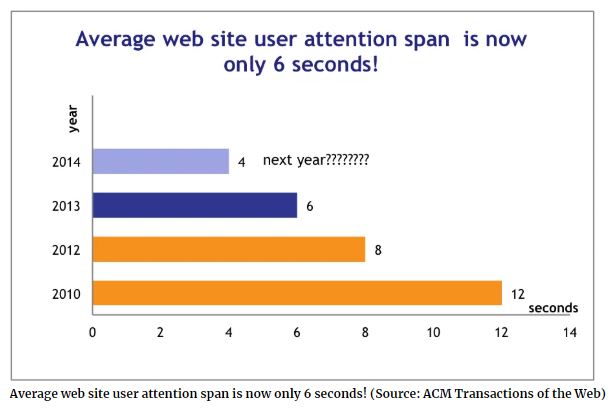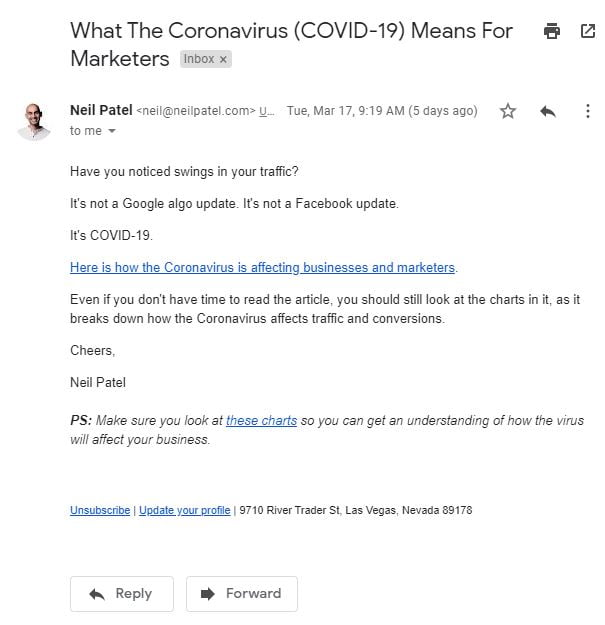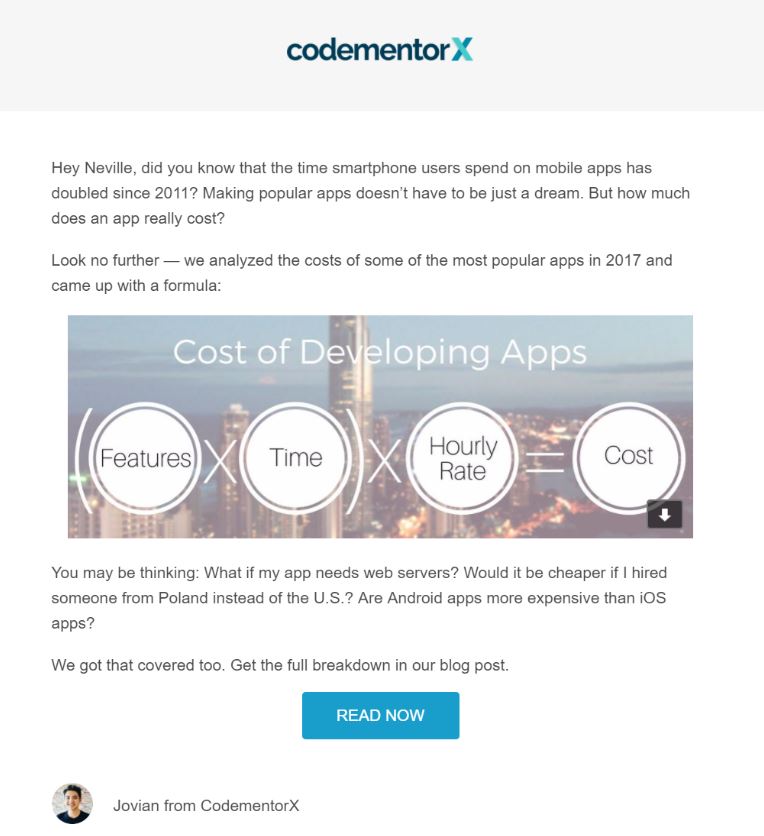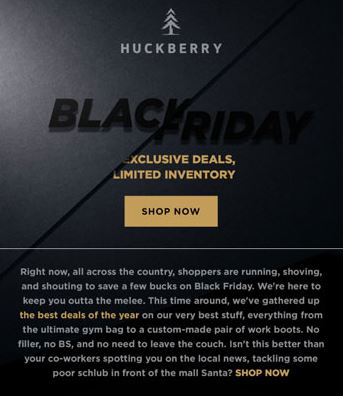Email has come a long way.
It was invented back in 1971 by Ray Tomlinson.
That was 49 years ago.
Today, it’s used to acquire customers, drive massive sales, and scale businesses.
Thanks, Ray!
It’s also a profitable channel for business.
I mean, who doesn’t want to collect subscribers passively and be able to promote content/products to them in a flash?
However, it’s not that simple.
You need good copy. No… you need great copy if you desire results.
It’s easy for performance to sink to the bottom of the ocean with bad email copy.
But, that’s what I’m here for. 🙂
I’m going to share email copywriting templates that drive insane open rates and clicks if you keep reading.
Make sure to watch this video to see me write emails from scratch too!
Email copywriting subject lines
What does every email begin with?
The subject line!
So, if your subject line sucks, nobody is going to read the email.
And if nobody reads the email, you lose traffic and money.
Then you can’t pay your Ferrari bills!
You get the point.
“To {First name}”
My favorite and all-time classic.
Addressing the recipient by their first name, like “To John” or “To Susan,” is the equivalent of receiving a handwritten letter.
It’s simple.
It’s personalized.
It directly addresses the reader.
This gets their attention and interest as a result.
It’s been found that emails with personalized email subject lines are 26% more likely to be opened.
I first thought about the power of this subject line when I received a cold email many years ago.
A gentleman wanted to guest author on my website.
He used this exact subject line template, and I was instantly intrigued to see what the email said.
Unlike 99% of emails that get dunked into my trash bin, it was completely customized and genuine.
I felt compelled to reply and interested in working with him.
Because there are few things more intimate than our name.
It’s our identity, our individuality.
Using it shows courtesy and recognition.
Career Coach Joyce E. A. Russell commented on this by saying:
It is the one way we can easily get someone’s attention. It is a sign of courtesy and a way of recognizing them. When someone remembers our name after meeting us, we feel respected and more important. It makes a positive and lasting impression on us. To not remember a name, especially when someone has had to repeat it several times, is to make that person feel slighted.
Collect the first name of customers, subscribers, etc., and use it in the subject line to see the results firsthand.
“Quick question about {Company name}”
If you’re doing B2B email marketing, then this is another go-to subject line to test.
It’s very similar to the first strategy, except you’re using the company name.
After all, it’s B2B, right?
I loved using this when I did my cold email prospecting campaigns in the past.
It had an awesome open rate because it’s personalized and straight to the point.
Use this if you’re pitching your services (more on that later) or directly inquiring about an organization.
The power of an ellipsis
Have you ever used three dots before or after a sentence?
It looks like this…
And, it’s technically called an ellipsis.
It’s used when you want to omit a part of a sentence for dramatic effect.
See where I’m going with this?
Using it in a subject line is a productive way to prompt a response.
Why?
Because it implies, there’s more information if they click the email and read it.
It’s mysterious; it’s interesting.
Try it yourself and see.
Bold statement = massive click-through
The average attention span right now is less than six seconds.

Yep, You read that right.
Most of us have attention spans not far from goldfish. 😂
That’s why you need to get attention FAST.
Remember that old Batman show where “Bam” and “Zing” would pop up when he hit a bad guy?
That’s how hard your email subject lines need to hit.
One way to achieve this is by using a bold statement.
…Something that goes against the norm.
…Something that readers don’t expect.
The value proposition
Who doesn’t love a good deal?
Nobody.
That is precisely why it makes for a killer subject line template.
A value proposition is what makes your offer unique and different.
It can be a feature, price point, or anything that jumps from the page.
Make it obvious in the subject line, like:
- “Try out the world’s first {Product}”
- “Introducing {Product}”
- “Don’t miss out on this massive sale”
- “Get 50% off with coupon {Code}”
- “The cheapest BMW’s on the market”
Email copywriting templates
You know how to write a subject line that gets readers clicking the open button so hard their fingers hurt.
Cool.
Naturally, that leads us to the body of the email.
Here are some templates you can try yourself:
The cold service pitch
If you’re using email as a way to prospect and pitch services, I got you.
I’ve used cold emailing to land freelance writing clients that pay me thousands of dollars per month.
We didn’t know each other.
We had no previous touchpoints.
It was all thanks to a little research, elbow grease, and this exact email copywriting formula:
Hey {First name},
Great work with Microsoft, Dell, and IBM. That’s super impressive.
My name is {Name} and I’ve helped companies like {Clients} {Achieve result}.
Does {Company name} need any help with {Service}?
Warm regards,
{Name}
It’s almost too good to believe. I know.
This email template works for a few reasons.
Firstly, it’s personalized.
It uses the prospect’s name, company name, and offers a custom compliment.
Keep in mind that 74% of marketers agree that targeted campaigns increase customer engagement. It’s no surprise.
Secondly, there’s no fluff or BS.
It’s straight to the point about what you do and how that can help the prospect.
It also ends with a call to action in the form of a question.
I’ve split-tested emails over dozens of campaigns, and nothing was more effective than this one.
Informational newsletter
You’ve collected some subscribers and want to send out an informational newsletter.
Sound familiar?
Great, because this is a newsletter template you can try yourself:
{Headline that summarizes newsletter}
- Introduction of topic, how it benefits readers, and what problem it solves.
- Major point #1
- Sub-point #1
- Major point #2
- Sub-point #2
- Major point #3
- Sub-point #3
- Summary and call to action.
This is a simple template you can remember off the top of your head, too.
The key is creating a benefit-driven headline.
Why should readers care to read the newsletter? What’s in it for them?
Elaborate on this further in the introduction where you mention what they will learn and what pain points it resolves.
Then, get down and dirty. Cover all of the major and minor points of the topic.
End it with a quick summary and a call to action. The CTA can be for your services, another piece of content, or anything that gets them further engaging with your brand.
Look how Appsumo uses a similar strategy with this newsletter educating subscribers about churn rates:
(Heads up, it’s a long one!)

I chuckled reading “Churn down for what.” It’s a cheeky headline.
Not only does this mix in other strategies like CTAs, agitating pain points, and more, but it educates readers on e and why it matters to solve it.
They summarize the major information near the end and once again provide a call to action for their software. Brilliant!
Short but sweet (Neil Patel style)
It’s easy to get fancy.
I’m talking about expensive designs, animations, images, and the works.
But, sometimes simple and ugly is what works the best.
Check out this email newsletter from marketing wizard Neil Patel:

That’s it.
It’s a plain text email that spans no more than 100 words.
It’s easy on the eyes. There’s one major CTA and an extra at the end.
I love sending newsletters like this myself.
You see, spam boxes are driven by artificial intelligence.
They tend to block emails that include lots of images, links, and media.
These are potential security risks for their users.
For instance, have you ever received an email you were expecting, but Gmail (or another provider) thought it was spam?
It probably included too much media.
To avoid landing in the spam box, I encourage you to test simple and short emails to gauge their response rate.
Get readers saying “Yes!”
A very underrated strategy in email copywriting is asking hyper-relevant questions.
These get readers saying “Yes.”
It piques their interest and lets them know they’re in the right place.
After all, you clearly understand who they are and what they’re interested in if you can ask them a targeted question.
Here’s an example from CodeMentor:

The email begins with two questions related to smartphone usage and apps.
There are more questions directed toward the reader below the image.
The first two are data-driven questions that gauge the reader’s knowledge— are they aware of the increase in smartphone users and how much it costs to make an app?
Then, the next questions are ones the recipient is potentially thinking of themselves. If so, they’ll be glued to the page and clicking that CTA button like their life depends on it.
Let’s do another example.
Imagine that you offer SEO services to clients, and you’re sending out a promotional email.
Somewhere in the newsletter, you would want to ask questions like:
- Do you use SEO to grow your company and acquire leads?
- Are you sick of receiving little traffic and backlinks?
- Hate seeing competitors outrank you?
- Don’t know how to climb to the top of the SERPs?
- Want massive traffic and authoritative links?
As Joseph Sugarman would say, you want readers to agree with the copy as they’ll be more likely to agree to the sale later.
Additionally, it makes them confident and comfortable with your product as it resonates deeply.
That brings me to the last template.
The classic PAS formula
PAS or pain-agitate-solve is one of the most tried and true copywriting formulas.
It works for blog posts, sales letters, emails, and any other form of copy.
The concept is simple. It works like this:
- You first address the pain point of readers to create an emotional reaction and get them engaged.
- You then elaborate on the symptoms to further agitate the problem.
- You provide a solution.
Here’s an example from the retailer Huckberry:

This email was for their Black Friday deals.
It begins by stating the pain point: running, shoving, and shouting to save money on Black Friday.
It irritates it by saying, “We’re here to keep you outta the melee.”
Finally, they propose their best deals of the year to get the best product without leaving the couch.
The Soap Opera sequence
The next two email copywriting templates are courtesy of Russel Brunson. 👍
I recently finished his book DotCom Secrets and was blown away by the amount of value it gave me.
One of the main takeaways for me were his email templates, the first being a “Soap Opera Sequence.”
So, what the heck does that mean?
Essentially the goal is to create open loops, interest, and curiosity by using storytelling and getting the reader at the edge of their seat.
Each email perfectly connects to the next one, and the reader must open them to get full value.
The first email sets the stage. What will prospects get in future emails? How often will you contact them? How will it improve their lives?
These are some of the questions you need to answer. Try this template out, for example:
– Welcome reader.
– Introduce yourself.
– Explain how often you’ll be emailing them.
– Detail the value they’ll receive.
– End it with a P.S.
The goal of the second email is to open with high drama. This means you begin at the climax of a story to hook their attention and get them excited.
Choose stories that are relatable to the reader and can transition into your product or service.
I recommend using customer case studies, testimonials, and success stories. Not only are these awesome stories, but readers can relate to the challenges you talk about.
Here’s an email copywriting template to try for this method:
– Welcome reader.
– Start at the climax of a story.
– Explain how you or the character got there.
– Talk about hitting a wall and seeking the solution.
– What were the pain points you or the characters experienced?
– CTA to read the next email to find out the solution.
The third email within the Soap Opera Sequence reveals the epiphany you had. Think of the “Aha” moment you or the character experienced to overcome obstacles.
Here’s a template to try out:
– Welcome reader.
– Explain the epiphany.
– Introduce the solution you’ve found.
– Explain how it will benefit the reader.
– End with a call to action to get the product.
Email number four introduces the hidden benefits of the solution. These are the not-so-obvious upsides of the product or service.
Imagine you’re like me and offer copywriting services. For the most part, what I deliver is pretty straightforward.
However, some of the hidden benefits include: 1) not having to worry about content or copy. 2) saved time and energy that can be delegated to other tasks. 3) more organic traffic, leads, and brand awareness. 4) higher conversion rates and revenue.
You could write the fourth email with this template:
– Welcome reader.
– Continue where you left off with the solution.
– Explain at least three hidden benefits.
– End with a strong call to action.
– P.S.
Last but not least, we have email number five. This is where you want to create a sense of urgency. They MUST take action now, or they’ll miss out on something uber amazing.

Try this template:
– Welcome reader.
– Summarize the offer.
– State a deadline for purchasing it.
– Strong call to action.
– P.S.
Wrapping up these email copywriting templates
Email marketing is essential.
Every business needs it as a revenue driver.
However, your email copy needs to be next level if you want significant results.
It all begins with the subject line. After all, it’s the first thing readers see and most people open emails based on he subject line alone.
I recommend asking a question, using a call to action, providing an incentive, or spiking curiosity.
The email copy itself will change depending on the goal.
For example, a sales email will be vastly different than a quick update or newsletter.
Some things to consider are:
- Using calls to action to promote engagement.
- Using stats and data to back up claims and make emails more interesting.
- Stating the benefit of your offer.
- Using power words and stories to get readers hooked emotionally.
- Asking questions that get readers harmonizing with the sales copy.
Take advantage of the templates and formulas I provided today to maximize your email copy performance. 💪
Enroll in my online courses to learn more about email copywriting.














